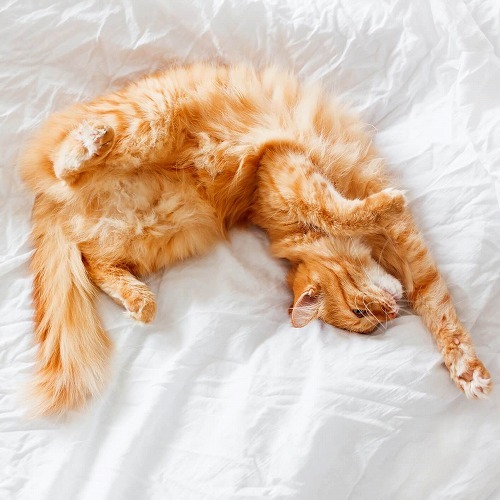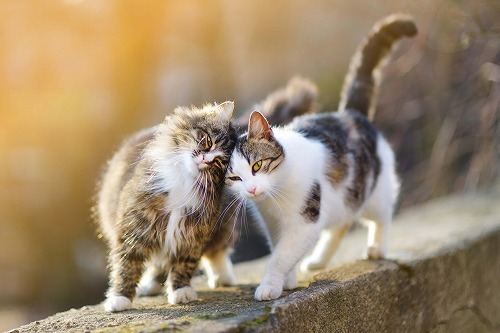As a cat owner, there are many signs and behaviours our cats can show us to let us know how they feel. Because cats are very limited in their vocal capacity, however their body language is quite developed. It can help you to know these physical indicators for anxiety, fear, comfort or even pain.
Purring
Purring is still a mystery to vets, they suspect it is from vibration of their vocal cords, but unsure why it correlates to comfort or relaxation.
Cats purr to indicate to us they are content, sometimes it can also show us they are feeling strong feelings of connection when its combined with kneading.
Tummy
Showing the belly of a lot of mammals is actually a sign of comfort as it is a very vulnerable point for them. So if your cat is showing off, showing you their tummy chances are this is an indicator of them wanting a pat on the head. When your cat is showing his/her tummy and rolling their back on the ground then don’t assume the rule of dogs applies to cats, don’t scratch their tummy. Instead a little head pat is ideal.
If they are laying on their back, with paws outstretched in front of them with their claws, this is a defensive position. Be cautious and avoid patting the cat at this time.
Fur
Felines tend to raise the ridge of fur on their spine when they are experiencing fear or a physical threat. Puffing up their fur along their back and their tail, gives them the illusion of a larger size that will hopefully intimidate a potential threat.
Cats who may be prone to anxiety do commonly puff their fur up very quickly, especially when surrounded by loud noises or sudden big movements. Try to be conscious of your behaviour around an anxious cat. Often cats that may have not had a warm start in life, can be left with long-term anxiety. Just like humans, this can often be managed however cats like this require time and space to heal and a lot of patience.
Head Nudging
As a cat owner, my little feline friend has waked me up on more than one occasion by a firm and assertive head-butt. Head butting is a common form of affection, but also it is a way to attract our attention. We humans tend to often greet these affectionate felines with a head nudge back, making them confident that this is a suitable form of communication with their owner.
Their Eyes
Well most cats don’t enjoy direct eye contact, keep in mind rules with dogs are different than cats. Cats find direct and prolonged eye contact intimidating and threatening. However if your kitty is blinking slowly it can be a sign of affection.
Widened pupils can often be a sign of either adapting their eyes to light or can also be an indicator your cat me be feeling anxious. By widening their pupils they can attain more visual information from their surroundings.
Kneading
The origin of kneading is from their kitten-hood, where they used to kneed their mother to get milk. This is adorably a trait that can continue into adulthood for some cats. Cats tend to kneed in response to comfort or also from patting. Different cats also tend to kneed differently. Some cats use claws, while others don’t. Although your cat may be using claws, just bare in mind they are showing you a sign of affection and not intending to hurt you. Maybe just put a pillow on your lap when they jump onto it.


Tag